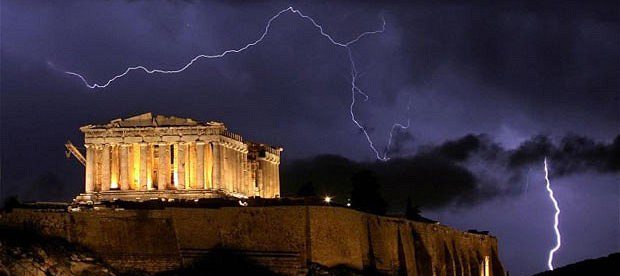Celts, Picts & Romans
The Scottish People or Scots, are a Nation & Ethnic Group Native to Scotland. Historically, they emerged from an amalgamation of 2-Celtic-speaking Peoples, the Picts & Gaels, who Founded the Kingdom of Scotland (or Alba) in the 9thC. Later, the neighbouring Celtic-speaking Cumbrians, as well as Germanic-speaking Anglo-Saxons & Norse, were Incorporated into the Scottish Nation
The Iron Age took place in Scotland around 700-BC & the Native Population Traded & Adopted new Technologies. The Celtic Knotwork & Decoration which is still admired today began in this Period & the Celts loved to decorate Metalwork & wore colourful Clothes & Jewellery. The Romans called the Tribes of the North ‘Caledoni‘ & named their Land Caledonia. The Picts, known as the ‘Painted People’ were one of the Celtic Tribes who inhabited Scotland. Named by the Romans, Historians think they Painted or Tattooed their Bodies & carved Standing Stones some of which can still be seen today. The Picts left little evidence behind but many Towns in Scotland still have Pictish names; Pittenweem & Pitlochry to name but 2. The Tribes in Caledonia resisted Roman Invasion & the Romans tried a number of Tactics to keep the Peace in the North. They Built 2-Walls: the Antonine Wall which stretched from the Forth to the Clyde & Hadrian’s Wall, both massive undertakings & designed to keep the fierce Tribes of Caledonia out of Roman Britain.

Dark Ages
The 1st Genetic evidence to confirm what some Archaeologists have long been arguing: that Celts represent a Tradition or Culture rather than a Genetic or Racial grouping. It was noted that the results also shed light on what happened during Britain’s Dark Ages, in the years between AD 400 & AD 600, after the Romans left. Towns were abandoned; the Language over much of what became England changed (to Anglo Saxon, which became English); Pottery styles altered; so too even the cereals that were grown, following the arrival of people from the base of the Southwest Danish Peninsula & North-western Germany (the Anglo Saxons). Some Historians & Archaeologists had wondered whether these changes occurred as a result of the Saxons entirely replacing the existing Population as they moved Westwards. That might have happened if the Saxons introduced disease, for example. Others researchers suggested that the existing Population simply dropped their old ways & adopted the Saxon way of life. The new analysis shows a modest level of Saxon DNA, suggesting that the native British Populations lived alongside each other & intermingled with the Anglo Saxons to become the English. There is some evidence in the Study that intermingling did not happen immediately following the Saxons’ arrival, but occurred at least 100-yrs later. This suggests that Britons & Saxons had separate Communities to begin with & then over time they began to Merge.

Northern Irish Groupings: This may well be one of the 1st Instances where Genetics has been used to clear up the Historical controversy. The Study seems to confirm the view that Celts retained their identity in Western & Northern areas of England where the Regions were incorporated into Anglo Saxon Territory by Conquest. But what could account for the variation in the DNA of those of Celtic Ancestry in Cornwall, Wales & Scotland? Time would be one possibility. If Groups have been separated for a period of time, they will diverge genetically so some of the differences we see genetically are the result of those kinds of effects. The Study also notes that there are 2-Genetic Groupings in Northern Ireland: one of which also contains individuals across the Sea in Western Scotland & the Highlands; the other contains individuals in Southern Scotland & Southern England. The former appears to reflect the Kingdom of Dalriada 1,500-yrs ago; the other probably represents the Settlers of the Ulster Plantations.
In Orkney, the Study finds clear evidence of Norwegian DNA, as might be expected from the Viking Settlement of the Islands. Interestingly, it persists at fairly low levels, suggesting that the Vikings & the existing Populations co-existed & intermingled more than people had expected – in the way that occurred with the Anglo Saxons. The Viking Armies that laid Waste to parts of England, & for a while ruled what became known as the Danelaw, left little if any Genetic trace, confirming that their success was due to their Military Prowess rather than large-scale Population movement. Likewise, the Norman Conquest of England did not leave any Genetic evidence.
The Celts, those mysterious Denizens of the Iron Age, buried Prominent people with Wagons along with other Goods. Wagons dating from about the 800–BC to 500–BC have been found throughout Europe in places like France, Germany, Austria & the former Yugoslavia. Artwork of the time also featured images of Wagons, which the Celts outfitted with Iron Tyres & Pivoted Axles. This includes Engravings on a Couch found at the Burial Site of a Celtic Chieftain, on which the dead reclined. The Couch, known as the Hochdorft Kline, shows a 4-wheeled Wagon drawn by a Pair of horses. Seated on the Wagon is a man carrying a Shield & a Sword, which leads Historians to believe that Wagons were used during times of War. The Hochdorf Kline is housed at the Hochdorf Celtic Museum in Germany. Along with proving helpful in Warfare, Wagons during the Iron Age of the Hallstatt Period (8th to 6thCs BC) were used for transporting Goods such as mined salt. Several Carriages have also been found whose purpose appears to have been exclusively Ceremonial. The Carriages feature Animals & Symbolic objects rather than providing room for Passengers.
